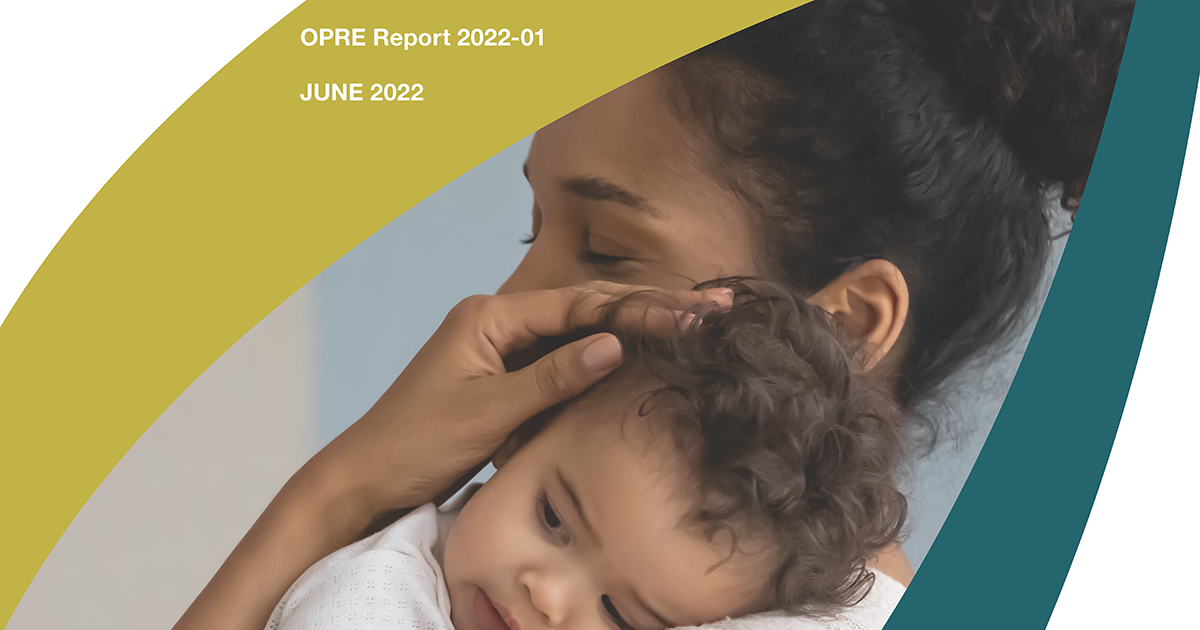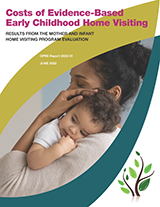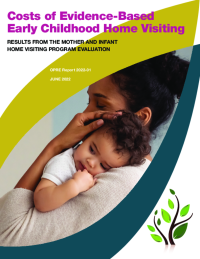Costs of Evidence-Based Early Childhood Home Visiting
Results from the Mother and Infant Home Visiting Program Evaluation

Introduction
 Children develop fastest in their earliest years, and the skills and abilities they develop in those years lay the foundation for their future success. Similarly, early adverse experiences can contribute to poor social, emotional, cognitive, behavioral, and health outcomes in early childhood and later life. Children who grow up in families with lower incomes tend to be at greater risk of encountering adverse experiences that negatively affect their development. One approach that has helped parents and their young children is home visiting, which provides individually tailored support, resources, and information to expectant parents and families with young children. Many early childhood home visiting programs aim to support the healthy development of infants and toddlers, and work with families with lower incomes, in particular, to help ensure their well-being.
Children develop fastest in their earliest years, and the skills and abilities they develop in those years lay the foundation for their future success. Similarly, early adverse experiences can contribute to poor social, emotional, cognitive, behavioral, and health outcomes in early childhood and later life. Children who grow up in families with lower incomes tend to be at greater risk of encountering adverse experiences that negatively affect their development. One approach that has helped parents and their young children is home visiting, which provides individually tailored support, resources, and information to expectant parents and families with young children. Many early childhood home visiting programs aim to support the healthy development of infants and toddlers, and work with families with lower incomes, in particular, to help ensure their well-being.
In 2010, Congress authorized the Maternal, Infant, and Early Childhood Home Visiting (MIECHV) Program by enacting section 511 of the Social Security Act, 42 U.S.C. § 711, which also appropriated funding for fiscal years 2010 through 2014. Subsequent laws extended funding for the program through fiscal year 2022. The program is administered by the Health Resources and Services Administration (HRSA) in collaboration with the Administration for Children and Families, within the U.S. Department of Health and Human Services (HHS). The initiation of the MIECHV Program began a major expansion of evidence-based home visiting programs.
Primary Research Questions
- How are resources allocated at MIECHV-funded local home visiting programs?
- How much does it cost to provide home visiting to the average family, and how do costs differ across families, local programs, and evidence-based models?
Key Findings and Highlights
- Local home visiting programs spent the largest share of their budgets on personnel. Personnel expenditures accounted for nearly 80 percent of local program expenditures, on average, over one year. The percentage varied across local programs but was similar across the evidence-based models.
- Two-thirds of personnel costs were for home visitor compensation. This finding is not a result of high home visitor compensation but reflects the fact that home visitors typically comprise more than two-thirds of a program’s personnel. However, costs varied across local programs and evidence-based models. Home visitor compensation made up a relatively smaller share of personnel costs for Early Head Start—Home-based option programs, whose staff provided a broad range of services (not just home visiting) to families. Nurse-Family Partnership programs spent a higher proportion of personnel costs on home visitor compensation, consistent with the program’s use of registered nurses as home visitors.
- Local program costs for serving a family during its first year of home visiting varied considerably, with costs for half of the families between $1,304 and $5,788 per year. Costs are linked to how many home visits a family received, the home visitor’s compensation, and how the program allocated resources. Costs were similar for providing home visiting to younger and older mothers, women who were and were not pregnant at the time of study entry, and women who were and were not first-time mothers. There was considerable overlap across the models in the costs to serve families at individual local programs, but average program costs for serving a family were higher for Nurse-Family Partnership and Early Head Start—Home-based option ($5,351 and $4,808, respectively) and lower for Healthy Families America ($3,238) and Parents as Teachers ($2,568).
Methods
MIHOPE focuses on the four evidence-based models that 10 or more states chose in their fiscal year 2010 plans for MIECHV funding: Early Head Start—Home-based option, Healthy Families America, Nurse-Family Partnership, and Parents as Teachers. It includes 88 local home visiting programs through which more than 4,200 women who were pregnant or had children less than 6 months old were randomly assigned to a MIECHV-funded home visiting program or a control group referred to other appropriate services in the community. Of these 88 local programs, 63 provided sufficient information on total program expenditures and service delivery data to be included in the cost analysis shown in this report.
Information on program costs comes from the following sources: total program expenditures for one calendar year, classified into cost categories such as personnel and supplies; service delivery data for the same time period as local program expenditures; and MIHOPE family service logs, completed weekly by home visitors for each family served.
The analysis presented in this report has some important limitations. First, it is limited to a subset of local programs that participated in MIHOPE and might not represent the costs of MIECHV-funded early childhood home visiting programs generally. Likewise, MIHOPE collected information during the first few years the MIECHV Program was being implemented, and costs presented in this report might not represent the current costs of providing MIECHV-funded home visiting. Third, the analysis excluded some types of costs, such as new-hire training costs, costs associated with staff attrition, and donated resources that were not available consistently across local home visiting programs. Fourth, estimates of family-specific costs may not capture costs for all services that might benefit families, such as the time a supervisor spends discussing a family with a home visitor.
Because it can take many years for the benefits of home visiting to accrue, this report does not include a full benefit-cost analysis, which might be conducted after further follow-up data are collected.






